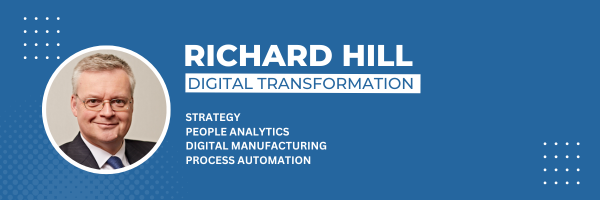Really pressed for time? Download the full guide to creating more flexible learning materials.
I’ve been part of higher education for over twenty years now, witnessing a number of changes that have each presented different challenges.
There is a paradox within higher education. The generally conservative characteristics of institutions reflect an environment that thrives when it is required to change. Academics demonstrate agility that a start-up desires; innovative solutions to new problems are debated, then developed at break-neck speed.
Of course, it is extremely disruptive to take an entire educational sector and transfer it online.
In the UK, `lockdown’ measures started part-way through an academic year. Institutions and students had no alternative but to cope with emergency measures to complete the remainder of their courses.
Ahead of the game
Many academics were ahead of the game, and examples are emerging where student satisfaction has improved as academic staff have deployed interesting and stimulating online alternatives to traditional lectures and tutorials.
The transition hasn’t been easy and it is not over yet. Uncertainty remains in society, and perhaps the only practical strategy going forward is to maintain a state of prepared-ness.
Not all subjects are the same though. A course that predominantly runs on debate and discussion might cope better with social distance controls than a course that expects learners to have their hands operating specific equipment, working in close proximity to peers, as they might be expected to do after they have graduated into their first jobs.
These challenges become re-cast as obstacles to circumvent or just knock-down; constraints that make something appear impossible become the driving force for innovation.
Longstanding debates as to the effectiveness (or not) of online teaching have quickly been dusted-off and are being re-visited with vigour. The difference now is that a) the whole sector has some experience of online learning, and b) moving forward, it is difficult to imagine a university education without it.
Managing changes in learning
Academic managers are constantly managing a number of recurrent issues from year to year. The headache this year of moving into an uncertain environment, with incomplete knowledge, is perversely an issue that is both extremely difficult to comprehend, as well as being intoxicatingly exciting.
A university’s branding is based on its reputation for research, teaching and societal impact. This reputation continues to be tested as we adopt new solutions for delivery.
Academic change agents are revelling in the volume of change that can be lead, so that the eventual response is progressive, innovative, and results in something that operates better as a result.
Many of my managerial colleagues are faced with the reality of managing the practicalities. If social distancing reduces your classroom capacity by 75%, there is not enough slack in the system to increase the number of staff hours by a factor of four to compensate.
This assumes that the traditional models of teaching are just transferred online with no change. And so, there are the physical constraints of maintaining a sustainable education sector causing the need for teaching to change.
Unintended outcomes
Interestingly, attendance at my departmental meetings has rocketed since we have gone online. It does show that the physical environment can prohibit networking, especially if it just isn’t practical to make the journey across campus to attend a meeting that is sandwiched between lectures.
I’ve had countless conversations with academic staff who are trying to make things work, as well as those that are genuinely bewildered by current happenings. Most of the questions I field are about the practicalities of potential solutions.
If we need four times as many hours to deliver the old solution, how can we deliver at least the same quality of service without making excessive demands upon staff?
Authoring flexible learning materials quickly
Academic colleagues are starting to demonstrate that new models of teaching can work and I have summarised some of these approaches, and the thinking behind them, into a short guide to creating more flexible, blended and online courses. The guide is not meant to be the last word on curriculum design and flexible learning materials, nor is it claiming to be a definitive answer to the challenges ahead.
It is a collection of the main issues that academics face when being required to turn their course delivery into something different.
The question of hours – how long will it take? – is a common part of academic workload discussions, so the bits of the guide that address this might be of use to other academic managers who are having similar conversations.
Some small vignettes describe case studies where online or blended approaches have been particularly successful in the past. There are also some links to materials that I have found useful in developing my own teaching.
Working in technology domain, this is an exciting time to explore the use of tools to facilitate, and ultimately enhance the way we interact, work and learn together. The challenges are there to be overcome.
“The impediment to action advances action. What stands in the way becomes the way.”
Marcus Aurelius.
Download the full guide to creating more flexible learning materials.


Leave a comment